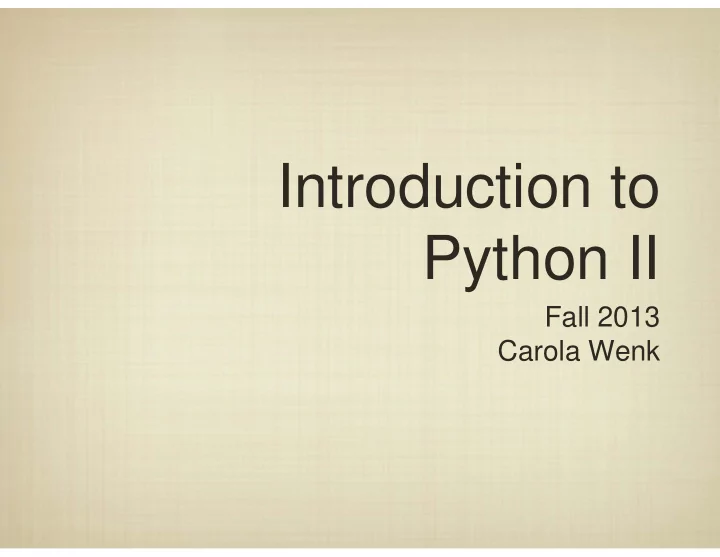

Introduction to Python II Fall 2013 Carola Wenk
Where do programs “live”? Hard Drive lw $t0, 1 lw $t1,0 lw $t2, n CPU Memory loop: bgt $t0,$t2,done add $t0, $t1, $t1 add $t0, 2 jmp loop done:
Where do programs “live”? Hard Drive lw $t0, 1 lw $t1,0 lw $t2, n CPU Memory loop: bgt $t0,$t2,done add $t0, $t1, $t1 add $t0, 2 jmp loop done: How is the program executed once it is stored on the disk drive?
Where do programs “live”? Hard Drive CPU Memory How is the program executed once it is stored on the disk drive? How do we choose a program to run?
Where do programs “live”? Hard Drive Operating System CPU Memory On modern computers, a program called the operating system is in charge of running one or more programs on the CPU. Each software program being executed is given appropriate access to system resources (e.g., memory, disk, I/O).
Operating System History Computer programs were first manually loaded and executed on mainframes. “Terminals” became popular in the 1970s as CRTs became inexpensive.
Operating System History In the early 1980s, the concept of a graphical user interface became an integral component of operating systems. The graphical component of software is just a layer that is useful for input/output.
Where do programs “live”? sum = 0 for i in range(1,n+1,2): sum += i The compiler / interpreter is specific to an operating Interpreter Compiler system and creates binary executables in the correct format. Hard Drive Operating System CPU Memory
Python Programming sum = 0 Operating System for i in range(1,n+1): sum += i or >>> 2+24 26 Python Interpeter Python is an “interpreted” language, so each statement is executed one at a time by the interpreter.
Recommend
More recommend